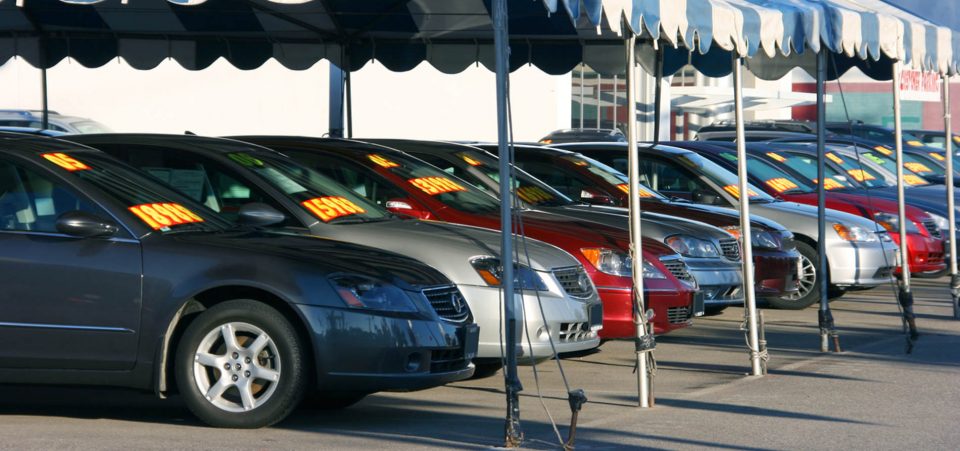Experts Say We’re on the Verge of U.S. Auto Industry Crisis
The almost-arrived U.S. auto industry crisis reads as a preventable tragedy of excesses: an oversupply of credit combined with an excessive inventory build-up to keep corporate investors investing. These two factors have conspired to create a forward demand-pull never before seen in the industry. But, if crisis is the invention of opportunity, investors pining for a new or used vehicle can benefit—with a little bit of patience.
The most recent data does not paint a pretty picture for U.S. auto sales 2017. Sales volumes for March 2017 fell nearly two percent year-over-year (YoY), below consensus guidance, which expected March to be the best month in a supposedly strong quarter. Although sales remain historically high, March was the third consecutive month of YoY declines and, historically, this had been a precursor to tough times ahead.
So, what is the driver of all this auto industry growth? You guessed it: cheap credit. Auto loan originations increased by a record $142.0 billion in Q4 2016, fueled by low interest rates which have been commonplace for many years. But for how much longer? Rates have nowhere to go but up.
The U.S. Federal Reserve has already started its interest-rate hiking cycle, boosting the Fed Funds Rate by 25 basis points in March 2017. The consensus is calling for an additional two rate hikes in 2017 and, even then, the cycle may not be over. When the Federal Reserve raises the Fed Funds rate, rising mortgage rates and retail lending rates follow. With so many addicted to the “new-normal” levels of ultra-cheap credit and, with discretionary spending still hampered by inflation outpacing stagnant wages, rising rates will act as an five-ton anchor on growth going forward.
To demonstrate just how tapped-out the consumer is, consider that the majority (57% percent, to be exact) do not have $500.00 to cover an emergency expense. What’s notable is that, if a surprise expense came up, 21% would rely on a credit card and 20% would cut back on other expenses altogether. Let that sink in for a moment. (Source: “A $500 surprise expense would put most Americans into debt,” CBS MoneyWatch, January 12, 2017.)
The fact is, the U.S. economy remains fragile, despite what the media talking heads tell you. U.S. small businesses are euphoric, but the reality remains that debt is near pre-recession levels, wage growth is non-existent, low-wage jobs rule the day (now less than 1/4 of all new jobs in America are considered “good” jobs), and underemployment remains high. Due to the automation of the workforce, further job cuts 2017 (and beyond) are imminently upon us. The ugly discretionary spending numbers don’t lie.
Now, when it comes to buying a brand new car, is it more believable that the sales party will continue in a rising rate environment, or that people will search for alternatives (such as purchasing a used car) unless the economy does a major U-turn?
Consider that a rhetorical question.
Let’s also consider the record amount of incentives that carmakers are offering consumers just to get them to sign on the dotted line. The most recent data indicates that General Motors Company (NYSE:GM) hiked buying incentives a whopping 21.4% from year-ago levels, to an industry average high of $4,892 per vehicle. Honda Motor Co Ltd (NYSE:HMC) did the same, raising incentives 27.0% YoY; Subaru Corp (TYO:7270) raised incentives by an amazing 59% YoY. The total dollar amounts spent by car makers on incentives in March 2017 alone: $5.54 billion, which is a record. (Source: “Auto Industry Resorts To Biggest Incentives Ever To Slow Decline In Sales,” Zero Hedge, April 2, 2017.)
See the trend here? To forestall the U.S. auto industry crisis, dealers are offering everything under the sun to lure customer in. Everything from five-year no-interest loans to sweeteners on car gadgets that few people actually need. The dealers are throwing the kitchen sink at consumers. This is a trend which must reverse in a peak sales environment for carmakers to remain profitable. When it does, the double whammy of higher interest rates and lower incentives is going to hammer new car sales particularly hard.
We can see signs of the fraying edges of auto loan stress in data from the Federal Reserve Bank of New York. U.S. auto debt is at a record high of $1.16 trillion while delinquency rates on auto loans increased in Q4 2016, so that 3.8% of all auto loan payments were over 90 days in arrears. The New York Fed classifies these loans as “seriously delinquent,” with outright impairments just around the corner. (Source: “Household Debt Edges Up as Auto, Credit Card, and Student Debt Climb,” Federal Reserve Bank of New York, last accessed April 11, 2017.)
This is the same type of situation we witnessed during the U.S. housing bubble, in which “jingle mail” started to become commonplace as resetting loan conditions and rising prices made loans unaffordable for many. And, just like the housing crisis, deteriorating loan quality for automobiles remains a major issue. Essentially, if you can fog a mirror, you can obtain a loan, and this never ends well.
With a potential consumer credit crisis in full bloom, this comes at a time when new car inventories have swelled to 13-year high, the highest level since 2004. To be sure, inventories generally swell when sales have been brisk, but it portends poorly to have levels this high as the sales cycle peaks.
Although carmaker earnings may suffer, savvy consumers looking to receive even more incentives and price discounts may just find a willing audience. It may be a great time to “push the envelope” and demand even more incentives and price discounts to get the car of your desire.
As the old saying goes, “Good deals are made in tough times.” The tough times aren’t quite here yet but, for those anticipating the writing on the wall, rock-bottom prices and factory incentives may await.
Will U.S. Auto Industry Face a Crisis in 2017?
U.S. automotive companies have already signaled that the U.S. auto industry crisis is on the way. During Ford Motor Company‘s (NYSE:F) January 2017 earnings call, which included an $800.0-million loss in Q4 and reduced guidance going forward, it disclosed that sales volumes were expected to fall in 2017 and that they expected used car prices to fall for several years thereafter. This was a backtrack from earlier prediction of moderate sales gains in 2017.
U.S. Automotive Industry Statistics, Year-to-Date (YTD) Sales
| YTD Sales | 2017 | 2016 | % Change |
| Total Car | 1,541,895 | 1,743,154 | -10.6 |
| Domestic Car | 398,271 | 502,430 | -15.6 |
| Import Car | 1,143,624 | 1,240,724 | -8.8 |
| Total Truck | 2,491,150 | 2,351,647 | 5.2 |
| Domestic Truck | 1,418,541 | 1,380,269 | 1.1 |
| Import Truck | 1,072,609 | 971,378 | 10.9 |
| TOTAL LIGHT VEHICLE SALES | 4,033,045 | 4,094,801 | -1.5 |
(Source: “Market Data Center,” The Wall Street Journal, last accessed April 11, 2017.)
With expectations of peak sales coming directly from the manufacturers themselves, it’s worth considering other less commonly discussed factors at play. These factors have the potential to blunt new car sales volumes for the next several years.
One of these factors is the advent of self-driving cars. There’s been virtually no discussion on how this could worsen the U.S. auto industry crisis. While we’ve yet to come across concrete industry numbers, it stands to reason that millions of Americans will delay making a new car decision until the burgeoning self-driving car shakes out. Few people want to get caught holding the bag with an “outdated” vehicle if/when self-driving cars get approved for use on roads across America. How many Americans are willing to hold onto their vehicles for an additional two or three years until they can gauge how the self-driving automobile industry shakes out? Doubly true if monthly insurance premiums are much higher than for autonomous vehicles, as is expected.
While this is just a tiny consideration right now, it’s one that grows every single day. And the day of reckoning is closer than many think.
In California, there are now 27 companies licensed to drive prototype self-driving cars on public roads. This is more than twice as many as one year ago, and almost quadruple since early 2015. Companies like Uber are already driving on city streets. (Source: Self-driving car numbers double on California roads, Financial Times, March 9, 2017.)
Even big multinational carmaker Audi AG (FRA:NSU, ETR:NSU) has announced a commitment to the mass production of self-driving vehicles. The automaker has announced plans to introduce autonomous vehicles on a retail scale by 2020, some of which require no human intervention in certain situations. A host of other manufacturers have either followed suit, or are expected to do so.
Consider, as well, the potential for new car prices to skyrocket if the “Trump tariff” comes into effect. Essentially, it’s President Donald Trump’s threat to impose 35% import duties on durable goods made outside of America. This threat has already been heeded by huge American manufacturers like Ford and General Motors, which have announced plans to shuttle operations in Mexico.
While this is great news for the American worker, it should mean higher prices regardless. If border taxes are introduced, they will be passed onto the consumer; if production remains in the U.S., manufacturing becomes more expensive and it’s the consumer who ultimately foots the bill. The threat of a trade war does nothing good for prices of durable goods in any scenario.
In the end, the looming U.S. auto industry crisis is quite a formidable one. Peaking sales, changing technology, channel stuffing, bloated inventories, and higher interest rates are conspiring to create an industry-wide problem. While bad news for automakers, opportunity presents itself to consumers in terms of deflating prices (especially used cars) and added incentives at the dealership.
Consumers may want to take advantage of the upcoming U.S. auto industry crisis. It could be the last car you buy that doesn’t drive itself.






